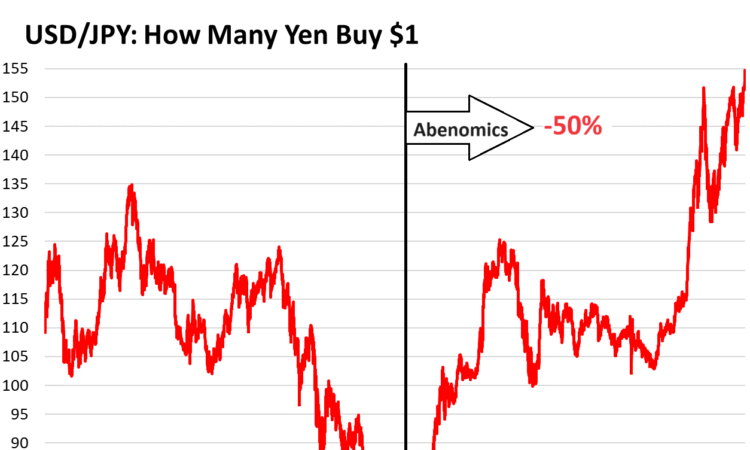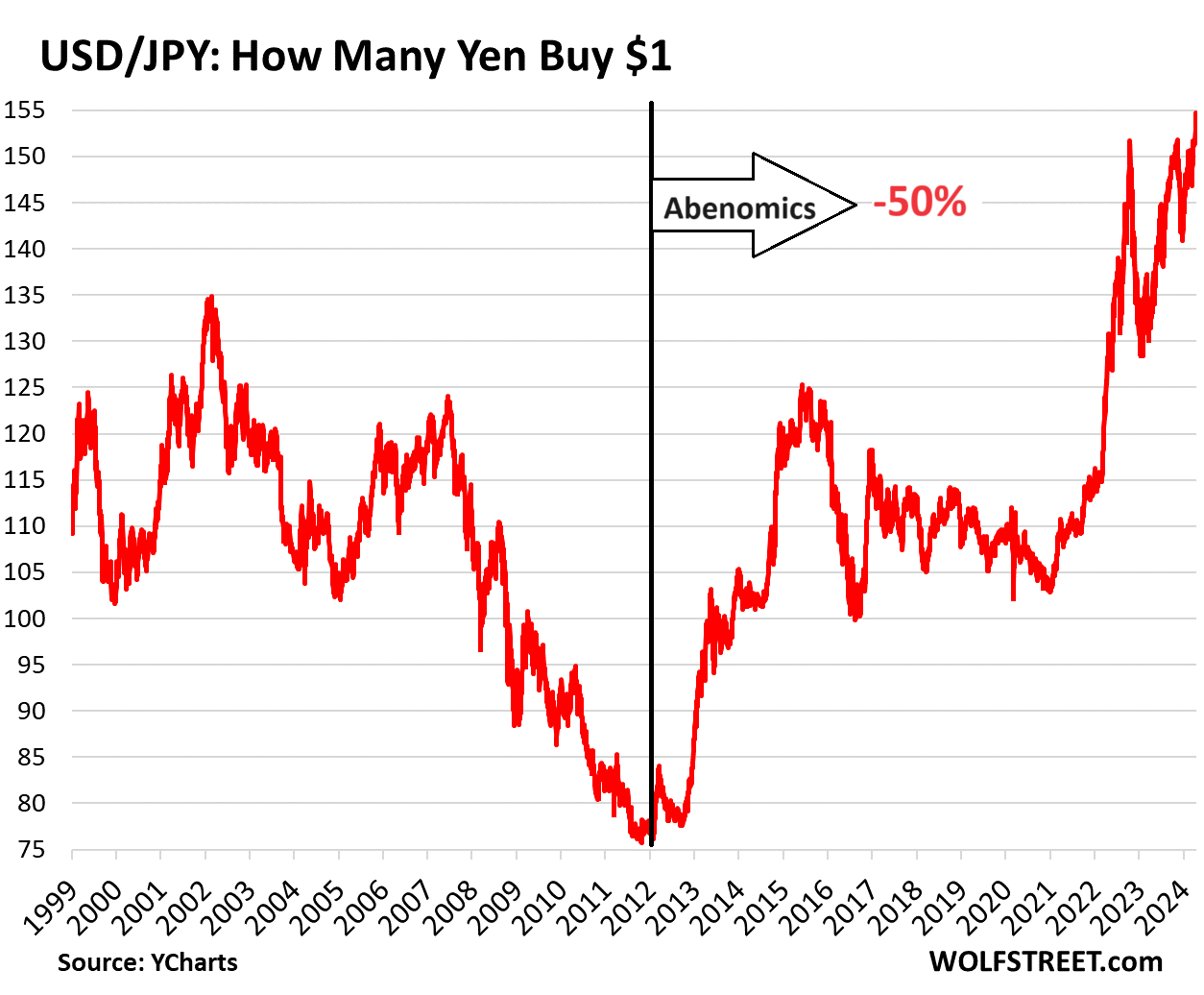Yen Drops to 155 against USD. Currency Collapse at Work, -32% against USD since 2021, -50% since 2012

Turns out, collapse of the currency is the price Japan is now paying for years of crazed monetary policies.
By Wolf Richter for WOLF STREET.
Today, the yen dropped to ¥154.7 to the USD, a 34-year low, despite endless copy-and-paste jawboning by Japanese authorities and some market intervention – selling hard-earned dollars to buy back yen that the BOJ had created in such reckless abandon – to prop up the yen.
The yen has plunged by 32% against the USD since 2021 when other central banks started moving away from QE and 0% or negative policy rates; and it has collapsed by 50% since 2012 when newly elected prime minister Shinzo Abe implemented his economic policies (“Abenomics”) of fiscal profligacy funded by money printing, huge amounts of money printing that was reinforced in 2016 by the institution of Yield Curve Control, which kept the 10-year yield near 0%.
The Bank of Japan has taught global central banks a huge lesson over the past dozen years: You can get away with endless amounts of money printing, no problem – see how we’re doing it? – essentially buying over half of the national debt with freshly created yen, plus a bunch of other securities, and there won’t be any bad consequences. Now that lesson has turned out to be fake. The yen is collapsing. There’s a price to pay after all: the destruction of the currency:

The only thing that is amazing is how long these kinds of crazed monetary policies can be maintained before something breaks, but then something does break, something big, like a currency. And the free-lunch theory that had driven all this turns out to have been fake.
The BOJ has started to react in tiny baby steps, but there is nothing in these tiny baby steps that would stop the destruction of the yen – it’s still destroying the yen, but in slightly smaller increments.
The process started in December 2022, by which time other central banks were hiking their policy rates in big increments and had turned to QT. That was when the BOJ “shocked” markets by lifting the ceiling of the 10-year JGB yield band to 0.5%. In 2023, it lifted the ceiling to 1%. And in October 2023, it discarded that explicit ceiling. Then at the policy meeting in March, the BOJ:
- Maintained QE, said it would “continue its JGB purchases with broadly the same amount as before,” about ¥6 trillion per month ($40 billion), based on market conditions.
- Scrapped its negative interest-rate policies by lifting the short-term rate by a breathtaking 10 basis points, OMG, from -0.1% to 0.0%, its first rate hike since 2007.
- Kind of ended yield-curve control but without throwing it out completely.
- Officially ended purchases of equity ETFs and J-REITs, though it had stopped buying them in 2023.
- Slowed but didn’t stop the purchases of corporate paper and corporate bonds and said it would end them altogether in about a year.
So the BOJ has done only a few micro-steps to move away from its crazed monetary policies, but it’s still largely stuck in these policies, it’s still pursuing them, just at a slower pace. Currency destruction at work.
Enjoy reading WOLF STREET and want to support it? You can donate. I appreciate it immensely. Click on the beer and iced-tea mug to find out how:
Would you like to be notified via email when WOLF STREET publishes a new article? Sign up here.
![]()

